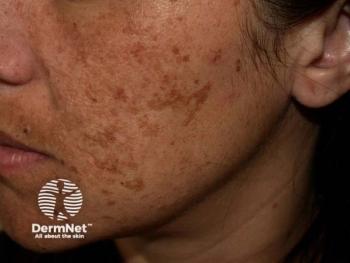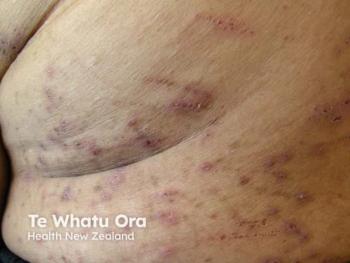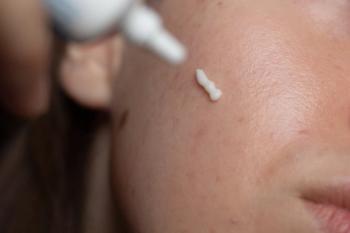
April Martinez-Dulay, MSN, APRN, FNP-BC, Shares Clinical Pearls on Dermatitis and Lymphoma
Key Takeaways
- Differentiating prurigo nodularis and atopic dermatitis involves understanding morphology and hallmark features like pruritus, eczematous lesions, and chronic relapsing course.
- Resistant dermatitis cases may require multiple biopsies, especially when patients do not respond to systemic, topical, or biologic therapies.
April Martinez-Dulay, MSN, APRN, FNP-BC, shares insights on diagnosing and treating types of dermatitis at DERM 2025, emphasizing innovative approaches and patient care strategies.
At the recent
In her first session, Martinez-Dulay provided clinical pearls on differentiating prurigo nodularis and atopic dermatitis. She emphasized the importance of morphology in diagnosing prurigo nodularis and highlighted three hallmark features of atopic dermatitis: pruritus, eczematous lesions, and a chronic relapsing course. Additional signs include childhood onset and xerosis. She noted that distribution patterns can be diagnostic, such as psoriasis in the gluteal cleft and AD patients who report feeling “allergic to their sweat.” One illustrative case involved a lesion that changed to an “apple jelly” color under a slide test, prompting biopsy and ultimately revealing cutaneous lymphoma. She stressed the importance of re-biopsying resistant dermatitis cases, particularly when patients fail to respond to systemic, topical, or biologic therapies such as dupilumab.
“Don't give up,” Martinez-Dulay advised. “If the patient still continues to have symptoms and does not respond to therapies, then do a biopsy...even if it's 20 times until you get that diagnosis.”
In her discussion on allergic contact dermatitis, Martinez-Dulay reviewed common sites including eyelids, face, hands, and genital areas. She explained the importance of patch testing—the gold standard for allergic contact dermatitis diagnosis—distinguishing between type I (immediate) and type IV (delayed) hypersensitivity reactions. She recommended the American Contact Dermatitis Society website for locating patch-testing providers and emphasized the importance of allergen avoidance, supported by resources like SkinSAFE and American Contact Dermatitis Society tools for identifying safe products.
Looking ahead, Martinez-Dulay expressed enthusiasm for the growing therapeutic arsenal for moderate-to-severe atopic dermatitis, including IL-4, IL-13, and IL-31 inhibitors. She and Murase will continue their work as “the itch and rash whispers” with the Dermatology Education Foundation, providing educational webinars, patient handouts, and clinic tools like soak-and-smear guides.
“We are everybody's best friend, but we are the worst enemy of allergic contact dermatitis, atopic dermatitis, and prurigo nodularis,” Martinez-Dulay said.
Newsletter
Like what you’re reading? Subscribe to Dermatology Times for weekly updates on therapies, innovations, and real-world practice tips.


















